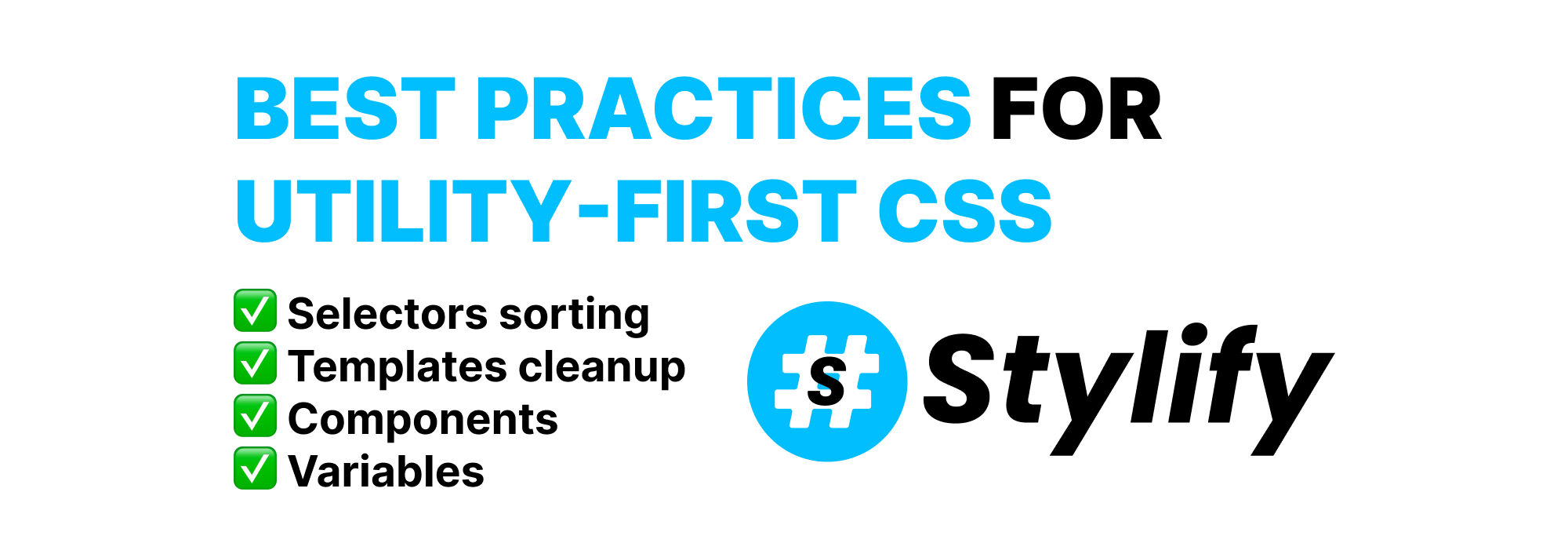
Faster React apps coding: How to migrate from Emotion CSS-in-JS to Stylify Utility-First CSS.
Want to style your React Application faster? Learn how to easily migrate from Emotion CSS-in-JS to Stylify utility-first CSS for better React development.
Looking for a better way to manage your CSS in React? Learn how to migrate from Emotion CSS-in-JS to Stylify CSS’s utility-first approach and streamline your development workflow.
You can try the examples in this article in the Playground On Stackblitz 🚀.
💎 Introduction
Stylify is a library that uses CSS-like selectors to generate optimized utility-first CSS based on what you write.
Features:
- ✅ Build module. No runtime script.
- ✅ CSS-like selectors
- ✅ No framework to study
- ✅ Less time spent in docs
- ✅ Mangled & Extremely small CSS
- ✅ No CSS purge needed
- ✅ Components, Variables, Custom selectors
- ✅ It can generate multiple CSS bundles
🔗 Components
In Emotion, components are often defined this way:
const Title = styled.h1`
color: blue
font-weight: bold
@media (max-width: 640px) {
color:red
}
`;
<Title>Hello World!🎉</Title>Stylify provides a similar feature. Components can be defined within a file (using content options), where they are used, or globally within a config.
Example with the configuration within a file. The content between stylify-components expects javascript object without surrounding brackets:
<!--
stylify-components
title: 'color:blue font-weight:bold md:color:red'
/stylify-components
-->
<h1 class="title"></h1>Example in a global compiler config:
const compilerConfig = {
title: 'color:blue font-weight:bold md:color:red'
};Usage:
<h1 class="title"></h1>Components are “lazy” (generated on demand). This means, that even if you configure them (in a file or globally), they will be generated only if matched within the content. No unused CSS will be generated. The same goes for utilities. If the utility for a component is not matched within a content directly, the selector is not generated and only the component selector is added to the CSS output.
The production CSS output will look something like this in production:
.a,.d {color:blue}
.b,.d {font-weight:bold}
@media (max-width: 768px) {
.c,.d {color:red}
}The html output:
<h1 class="d"></h1>🎯 Selectors
In Emotion, you can use CSS prop to style element directly like this:
<div css={css`
color: blue;
font-weight: bold;
@media (min-width: 640px) {
color: red;
}
`}></div>Stylify allows you to use utilities directly within the content. So the above example can be refactored to this:
<div className="color:blue font-weight:bold md:color:red"></div>The production output of the CSS will be similar to the example of the components. The HTML however will look like this:
<div className="a b c"></div>🌐 Global Styles
Sometimes we need to style some parts of the application globally. To do that within the Emotion, we need to use the Global component:
<Global
styles={css`
.some-class {
color: hotpink !important;
}
`}
/>In the case of Stylify, you can use custom selectors to solve this problem. These selectors can be defined directly within the class attribute or in the global config.
Example with the class attribute:
<div className="[.button_.icon]{font-size:14px}">
<button className="
[.icon]{color:#fff;border-radius:12px}
[&+button]{margin-left:24px}
">
<i className="icon"></i>
</button>
<button></button>
<div>The syntax pattern in the class attribute looks like this:
[css selectors]{stylify selectors split by ; (semicolon)}The _ (underscore) is used instead of space in both CSS and Stylify selectors and the & character always refers to the current element.
The same code but in the global config would look like this:
const compilerConfig = {
customSelectors: {
'.buttons-wrapper .button .icon': 'font-size:14px',
'.button': `
.icon { color:#fff border-radius:12px }
& + button { margin-left:24px }
`,
}
}When defining customSelectors in the global config, the syntax lets you use a nesting feature. The & characters refer to the upper level.
Usage of the global config:
<div className="buttons-wrapper">
<button className="button">
<i className="icon"></i>
</button>
<button></button>
</div>💲Variables
When you need to pass a color into the component using props, then instead of doing this color: ${props => props.textColor};, you can use native CSS variables:
<div
style={{ '--localTextColor': props.textColor }}
className="title color:$localTextColor"
>
</div>We just need to tell Stylify that the localTextColor is external:
const compilerConfig = {
externalVariables: ['localTextColor']
}The external variable can also be defined only in the file where it is used:
<!--
stylify-externalVariables
localTextColor
/stylify-externalVariables
-->
<div
style={{ '--localTextColor': props.textColor }}
className="title color:$localTextColor"
>Stylify also provides an option to configure custom variables. It can be done in the file where they are used, in the same way as components or in the global config:
In file:
<!--
stylify-variables
primary: '#000',
secondary: '#444'
/stylify-variables
-->
<div class="color:$primary"></div>In Compiler Config:
const compilerConfig = {
primary: '#000'
}📦 Splitting CSS
Emotion splits CSS automatically and injects it directly into the document based on the rendered components.
Stylify doesn’t have any runtime script, so you have to configure the Bundler and the splitting manually.
However, the Stylify output is so small (it can be even 10 Kb (gzipped) for a large website), that it is ok to have only one bundle for the whole project. Eventually, there you can check tips for CSS bundles splitting.
Bundles config example:
const bundles = [
{
outputFile: 'path/to/layout.css',
files: ['path/to/layout.jsx']
},
// Bundler uses https://npmjs.com/package/fast-glob
// You can use its glob syntax
{
outputFile: 'path/to/global.css',
files: ['path/**/*.jsx']
}
]);

